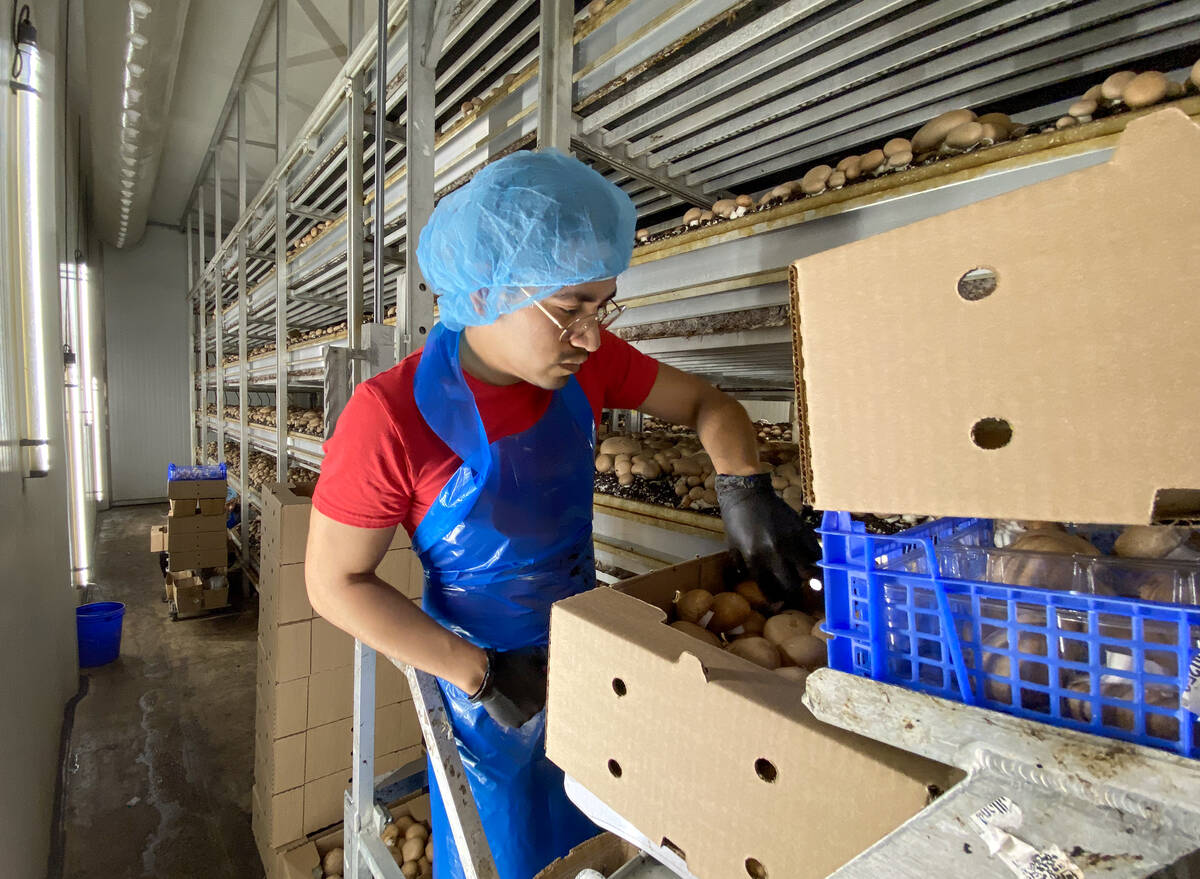Forget waterhemp – cannabis might be Canada’s fastest spreading weed.
Since legalization in October of 2018, cannabis production in Ontario and across the country has exploded. From oils and edibles to dried flowers and other products, consumer demand for what was once a morally and legally maligned product continues to rise.
But while legal cannabis production went through explosive initial growth, market issues, regulation, and massive overproduction have dragged the industry into a period of consolidation.
Read Also

Ontario’s other economic engine: agriculture and food
Ontario Federation of Agriculture president, Drew Spoelstra, says Ontario’s agriculture and agri-food sector should be recognized for its stability and economic driving force.
Why it matters: The cannabis sector provides good lessons on how investors and markets react to the introduction of a new commodity crop.
The overall market potential for Canadian cannabis products is enormous. Findings from the Chicago-based consultancy firm Brighfield Group, for example, suggest Canada’s cannabis market will grow at an annual rate of 10 per cent over the next five years to $8.8 billion, driven by increased sales in edibles and vape products.
Hub International also published a 2022 Cannabis Industry Outlook report, detailing monthly record sales of $319 million in June 2021. At the time of the report’s publishing, Canadian sales for 2022 were projected to reach $4 billion (USD), and $6.7 billion (USD) by 2026.
George Smitherman, president and chief executive officer for the Cannabis Council of Canada, confirms retail sales are anticipated to reach the $4 billion mark this year. With such numbers, he says it’s not hard to see why legal, large-scale cannabis production went from a standing start to full sprint seemingly overnight.
Making concrete assertions about future demand is not a science, though. Indeed, Smitherman says estimates on the overall market potential relies on data which is “very, very scant,” and realization is contingent on a wide array of factors, including regulation and taxation.
Canada’s cannabis industry, says Smitherman, is facing “decidedly challenging financial circumstances” due to overburdensome regulations and the continued presence of a well-entrenched illicit market.
This reflects information shared by Hub International, which states many cannabis operations have proven unprofitable despite record sales. At the same time, Canada had already hit a record number of mergers and acquisitions, with 29 deals made through June 2021 – more than double for the same period in 2020.
“There’s a lot of pressure on the financial liability, definitely,” says Smitherman. “There’s definitely is a lot of consolidation. It’s a word that’s been around forever, but we have to be careful of how we use the term. Sometimes it means merging assets. But sometimes its complete financial collapse and loss for investors. That scenario risks being repeated hundreds of times across the country, and really fuels our urgency to make progress on a variety of issues
“The cannabis investor has been subsidizing the consumer.”
Against this backdrop, he adds the industry has several “big asks” directed at changing current government policies and tax levels.
First is a lowering of the excise tax rate. Like alcohol, cannabis is automatically levied with a fixed per unit rate prior to sale. In an effort to compete with the illicit market, Smitherman says cannabis manufacturers have artificially lowered prices of dried flower (the mainstay of cannabis sales). But in doing so, the share of the fixed excise tax has risen from about 10 per cent to 35 per cent.
Other taxes, including HST and those imposed by the Ontario Cannabis Store, apply in addition.
Removing some particularly onerous regulations is another ask, as is the need to “breath new life” and investment into cannabis as a pharmaceutical.
“There are a lot of [restrictions], and some of it is kind of ‘nanny state,’ like the limit of 10 milligram [of THC] for edibles,” says Smitherman. “It’s a slow and steady approach we’re doing with that, but it leaves little in the way of product options for more regular consumers.”
“Excise tax, HST, and the markup the Ontario Cannabis Store…It’s a very, very profitable enterprise – for [the government],” says Smitherman.
Production problems
Production issues add another layer of complexity, and were particularly pronounced early in Canada’s cannabis boom.
Susceptibility to downy mildew and cannabis aphids, for example, continue to be a challenge for growers.
Youbin Zheng, a professor of horticulture and controlled-environment production researcher at the University of Guelph, says hardly any scientific research on cultivation was available at the early stages of legalization. There was also a notable lack of well-trained growers, meaning the knowledge and growers were mainly from the legacy market.
“Due to the fact that the vast majority of the illegal operations were small in scale, and the legal operations are much larger; scaling up at the earlier stage was quite challenging,” says Zheng.
“Since legalization, there have been increasing numbers of scientific studies on how to effectively and efficiently cultivate cannabis. These studies including light intensity and quality, rootzone management such as fertilization, pathogen and insect control, etc.”
Zheng adds recent studies have debunked many myths. For example, many growers have been using overly high levels of phosphate-containing fertilizers which harm both yield and quality, in addition to posing an environmental risk. Advances in greenhouse cannabis production are beginning to have an impact in other crops as well, including a better understanding of light control in relation to nutrient content.
“Over the last few years, some colleges and universities also started to train students for the cannabis industry,” says Zheng. “The trend is that cannabis will be produced with increasing efficiency and be more environmentally friendly.”
Massive overproduction
To say some cannabis operations have been unprofitable is an understatement, according to Bill MacDonald, professor and program coordinator of the Commercial Cannabis Production program at Niagara College. The top problem isn’t regulation though – it’s the fact that many major players have proven to be very poorly run, and funded almost entirely by investor dollars.
“They got money on what was called ‘funded capacity.’ There was tons of over production and going to a large-scale way too fast,” MacDonald says.
“Everybody wanted to be the biggest and the first. It made no sense at the time, and now the chickens are coming home to roost…I don’t care if your growing corn, soybeans, or tomatoes, you don’t start by saying ‘I’m going to grow a million square feet.”
How much overproduction? According to MJBiz Daily, Health Canada data indicates approximately 450,000 kilograms of unpackaged dried cannabis was destroyed by licensed producers between 2018 and 2020. The article goes on to say the actual amount of destroyed cannabis “is believed to be much higher because the unpackaged figure doesn’t account for packaged cannabis – defined by Health Canada as marijuana held in stock and ready for sale. In addition to the nearly 450,000 kilograms of destroyed unpackaged cannabis, almost 6 million packages were destroyed in 2019 and 2020.”
A later article from the same author, states less than 20 per cent of all cannabis produced since legalization has been sold. The remainder either sits in storage or has been destroyed.
With significant overproduction, huge infrastructure investments, and no real profits, MacDonald reiterates a slew of major players have already fell by the wayside – the closure of a large facility in Edmonton, a Leamington-area company that entered receivership before initial construction was even complete, and a Strathroy-based company recently filing for creditor protection, to name a few examples.
Many of those remaining also feature rapidly revolving executive doors.
“CEOs are changing monthly, or quicker. A lot of CFOs are leaving because auditors are saying ‘what the heck is going on?’ And a lot of them took millions in compensation despite not making a profit,” says MacDonald.
“It’s all investor money. There’s nothing from profit. Whatever was new and shiny they had to have it. If it won’t work, well, they put more money in it.”
MacDonald indicates pressure from regulation, the illicit market, and the fact that cannabis is “a tricky plant to grow” are valid concerns. Massive overproduction and failure to produce a quality product, however, have been the most significant factors contributing to the failure of large cannabis operations.
Those who started small are in a much better position. There is also opportunity for the production of high-quality craft cannabis through “micro cultivators” – licencing up to 200 square metres. But considering large, inefficient companies continue to dump product, MacDonald says staying competitive remains a major challenge.













